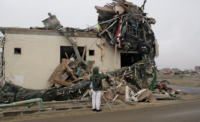On July 5, at 2:15 UTC, the Japan Meteorological Agency and Pacific Tsunami Warning Center issued Tsunami Watch Information Number 001, a joint directive that informed emergency personnel in the Indian Ocean Region that at 6.7-magnitude quake had occurred off the coast of Northern Sumatra, Indonesia. There is a very small possibility of a destructive local tsunami in the Indian Ocean, the email message read. The tsunami watch information was provided, according to the message, on an interim basis prior to the establishment of the tsunami early warning system in the region. Recipient countries were directed to issue warnings on their own initiative and responsibility.
The event did not cause a significant wave, but it did trigger another stopgap cooperative warning effort. Without a comprehensive notification system in place, personnel around the Indian and Atlantic oceans have been scrambling to help each other in the aftermath of Decembers tragic tsunami in the Indian Ocean. In Sacramento, Calif., emergency personnel and politicians are debating how to improve notification of geological activity at an oversight hearing of the state Senate Governmental Organization Committee in the aftermath of a 7.2-magnitude quake that struck off the coast of Crescent City on June 14.
Paul Whitmore, scientist in charge at the West Coast and Alaska Tsunami Warning Center in Palmer, Alaska who issued the Centers first warning since it was established in 1967 at 7:55 that evening, says the message was issued flawlessly, but there were some glitches down the line. Software and coding mistakes caused some Bay Area Emergency Alert System (EAS) warnings to be delayed.
One suggestion at the Senate Committee meeting was to conduct a dry run of the system once the problems had been fixed; the message that runs across the screen could be altered to show that the warning is only a test. The Alaska Tsunami Warning Center conducted such a test last year with a message that directed people to go to the Center web site and indicate when they received the message. We invited the West Coast to participate, but they declined, Whitmore says.
Other suggested improvements include upgrading the EAS to digital so warnings could be sent to cell phones and be compatible with new broadcast technology. The National Oceanic and Atmospheric Administration is in the process of upgrading the hundreds of tide gauges it currently uses to send information every six minutes instead of every hour. Whitmore says within the next few months, the Center should be able to isolate warnings of 7.1-magnitude and above events to certain portions of the coastline instead of sending evacuation notices from Canada to Mexico.


Post a comment to this article
Report Abusive Comment